Main Functions, Objectives, Procedure - Export Trade | 11th Commerce : Chapter 26 : Export and Import Procedures
Chapter: 11th Commerce : Chapter 26 : Export and Import Procedures
Export Trade
Export Trade
Exports have attained greater importance
in the contemporary world. It has emerged as one of the vital indicators of a
nation’s social, economical andpolitical growth. No country in the world can
produce all the goods and services it required. They have to inevitably buy and
sell from one another. Therefore countries have to engage in international
trade. Export and import represent two sides of the same coin of international
trade. In other words the countries have to buy the goods which are either not
available or not adequately available in home country and sell the surplus goods/
services produced by it to other countries which need them utmost. In short
each and every country has to export surplus goods and import the deficit
goods. In this process, it earns precious foreign exchange and use the foreign
exchange thus earned for import goods which cannot be produced or adequately
produced in the home country.
Developing countries like India,
Bangladesh, South Korea and so on require substantial amount of foreign
exchange in order to acquire machineries, equipment, raw materials, petroleum
products, mineral resources, technical know-how, managerial talents and so on
for their faster economic development. Government of India has initiated
several steps to encourage exports. It has been promoting export by providing cash
incentives, tax incentives and relief, institutional support, concessional
interest rate, infrastructural assistance, loan assistance, tax exemptions, tax
holidays and transport concessions, etc., Trade delegations are sent abroad to
explore export potential for various products and services in various countries
across the world. Bilateral trade agreements are entered into with foreign
countries which offer bright prospects for export. Besides trade fairs and
exhibitions too are organized for promoting international business. The
Government of India has set up several institutions for the purpose of
promoting exports.
Export and Import Bank (EXIM Bank)
Export and Import Bank which is one of the specialized financial institutions wholly owned by Government of India was set up in the year 1982 for financing, facilitating and promoting foreign trade of India. The main objective of EXIM bank is to co-ordinate the various activities of institutions and bank engaged in financing foreign trade.
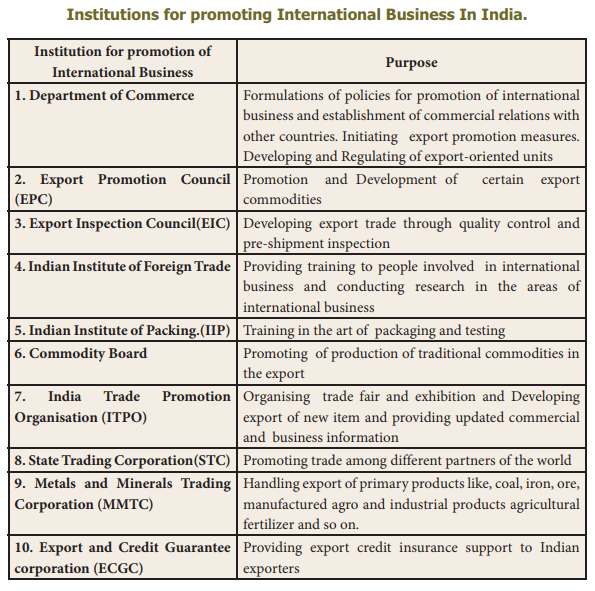
Main Functions of EXIM Bank
Main functions of EXIM bank are listed
below
1.
It provides direct financial
assistance to exporters of plant, machinery, and related services.
2.
It underwrites the shares, debentures
and bonds of the companies engaged in exports
3.
It provides re-discount facility in
respect of export bills for a period not exceeding 90 days against short-term
export bill discounted by commercial bank.
4.
It gives overseas buyer credit to
foreign exporters for the import of Indian capital goods which are used for
manufacturing export products.
5.
It finances export- oriented industries.
6.
It collects and provides market and
credit information about foreign trade to those engaged in international
business.
Role of Commercial Bank in International Business
Commercial banks provide financial
assistance in two ways, namely, pre- shipment financial assistance and post-
shipment financial assistance.
Pre-Shipment Financial Assistance.
This is the type of assistance given to
enable exporters to purchase raw materials process them and create finished
goods for the purpose of export. This credit is given on the basis of exports
orders and letter of credit opened in favour of overseas buyer
Post-Shipment Financial Assistance.
Post-shipment financial assistance is an
assistance granted in the form of advances on the basis of bills of exchange
and shipping documents drawn under letters of credit. This type of export
finance is granted right from the date of shipment of the goods to date of
realization collection of export proceeds for the purpose meeting capital need,
paying insurance charges. ECGC premium commission and brokerage to agent export
promotion expenses and so on and so forth.
Objectives of Export Trade
The important objectives of the export
include the following.
1.
Facilitating selling of goods to
countries which desperately need such goods
2.
Expanding the market for goods by
producing them on a large scale.
3.
Earning foreign exchange through exports
4.
Helping a country increase the national
income
5.
Creating
employment opportunity in a country by promoting of export -
oriented and export related enterprises.
6.
Generating revenue for the Government in
the form of customs and excise duties.
7.
Promoting mutual understanding and
co-operation among the nations.
8.
Achieving optimum utilization of
resources by large scale production of goods
Export Trade Procedure
An exporter has to fulfill the formalities
given below to export the goods out of the country
1. Receiving Trade Enquiry
Exporter receives trade enquiry (written
request) from the importer / his agent who intends to buy the product. In the
first place importer requests the exporter to supply the information given
right below.
a.
Specification about the goods like,
size, design, quality and brand name.
b.
Quantity of goods available.
c.
Price per unit
d.
Terms and conditions of shipment
e.
Terms and conditions of payment
f.
Probable delivery time
g.
The period up to which his proposal to
import is valid.
2. Receiving Indent and Sending Confirmation
After the scrutiny of quotation /
proforma invoice, the buyer who intends to buy the goods sends an indent to
exporter. The latter may either receive the order directly from the importer or
through an agent who acts as an intermediary between the exporter and the
importer. The agent receives commission for this intermediating service. An
indent actually points to an order received from abroad for export of goods. i.e.
sale of goods. The indent contains the details in the box.
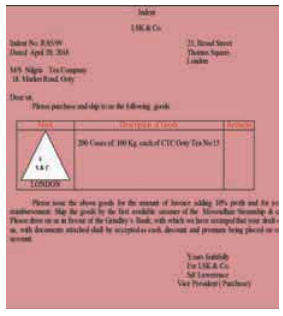
Indent is prepared in duplicate. One
copy of the indent is sent to the exporters and second one is retained by the
importer and kept in his records. There are three types of indent, namely open
indent, closed indent and confirmatory indent.
A.
Open Indent
It gives complete freedom to exporter to
choose type of goods, price, quality, method of packing etc.,
B.
Closed Indent
It does not give any freedom to exporter.
Importer specifies climates the type of goods, price, quality, packing method,
and so on which should be strictly observed by the exporter.
C.
Confirmatory Indent
An indent is to be confirmed by
importer/ his agent and the final indent is sent by importer thereafter.
3. Arranging Letter of Credit
Under this stage exporter intends to
satisfy himself/herself about the trust worthiness of the importer. In this
case the exporter is requested to arrange a letter of credit in his favour.

Letter of Credit (LC) is an undertaking
by its issuer(importer’s bank) thatbillsofexchange drawn by the foreign dealer
on the importer will be honoured upon its presentation by exporter’s bank up to
a specified amount. In other words it simply represents a guarantee given by
the importer bank to the foreign dealer (exporter) that the amount in the bill
will be honoured upon its presentation by the exporter /his agent. There are
different types of letter of credit.
Letter of Credit is opened only for
well- established and reputed importer. It is beneficial both to the exporter
and importer. Exporter is assured of payment and need not bother about credit
worthiness of importer. The letter of credit simply transfers the burden of
settling the transactions to the bank
4. Obtaining Importer Exporter Code (IEC) and RBI code Number
Exporter has to apply in Ayaab Niryatt
Form 2A(ANF2A) to the Regional Authority of the Director General of Foreign
Trade (DGFT) in the region where the registered office of the company is located.
Exporter has to mention the number in all the shipping documents. However IEC
number is not required where the goods are exported/imported for the personal
use of importer and not for trade/ manufacture or agriculture purpose.
5. Obtaining Registration cum Membership Certificate (RCMC) from Export Promotion Council /Commodity Board
An Exporter is required to obtain RCMC
from Export Promotion Councils/ Commodity Board/Development Authority in order
to avail himself/herself of export incentives, concessions, and other
facilities offered by Government e g. cash compensatory support and benefit of
promotional scheme from Government.
6. Manufacturing /Procuring Goods and Packing items
Exporters steps
into manufacturing and procuring of goods required by the
importer. Where the materials required for manufacturing of goods are subject
to excise duty. the exporter has to apply to Export Commissioner for exemption
from excise duty if the goods are meant for export along with the invoice
AR4/AR5 and other documents. The Excise Commissioner would issue excise
clearance certificate if he is satisfied with the documentation made by
exporter. If the exporter has already paid excise duty, he can get refund from
the Directorate of Drawback functioning under the Ministry of Finance.
The exporter proceeds to collect the
goods from the factory or purchase it from the market. These goods have to be
packed as per the specifications given by the importer. Where such instructions
are not specifically given by the importer, the goods can be packed
keeping in mind the safety and freight charges in respect of the consignment.
The goods packed are marked distinctly to facilitate easy identification of
goods of specific importer. The markings reveal the name of the importer, port
of destination and weight of consignment.
7. Export Inspection Certificate
After the goods have been packed as per
the specifications of importer, the exporter has to apply to the Export
Inspection Agency (EIA) or other designated agency in this connection The
agency sends an inspector
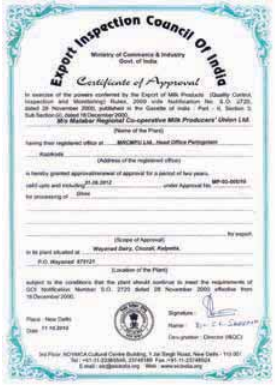
If the inspector is satisfied with the packing he/she issues
certificate mentioning that goods exported adhere to specification made by the
exporter. This certificate is termed as Export Inspection Certificate. It is
required by the customs authorities for the shipment of goods.
8. Insurance of Goods
Exporter has to arrange for getting the
goods insured to protect them against the various risks like deterioration,
collision, immersion, fire, entry of sea water etc., as per the instructions of
importer if any.
9. Certificate of Origin.
Import regulation of foreign countries
may require that all this import consignments must accompany a certificate of
origin. This certificate certifies that goods which are exported have been manufactured in a particular country. In India,
Chamber of Commerce, Trade Association, Export Promotion Council have
been empowered to issue such certificate.
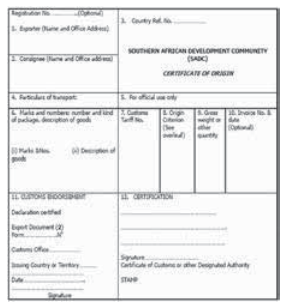
It will be sent to importer, This certificate helps the
importer to get concessions on import duty on the goods imported based on the
bilateral trade agreement between the countries.
10. Consular Invoice
Where the customs
duties are charged
on the basis of value of goods at import’s port(ad-valorem basis), the
customs officers are empowered to open
the consignment to calculate
duties. In order to avoid this problem exporter obtains consular invoice and
sends it over to the importer.
This document is signed by the consul of
importer’s country stationed in exporter’s country. Hence customs officer at
the port of destination will not open the consignment and simply access customs
duty based on the value declared in the invoice. They simply accept the invoice
as true statement of the content of the consignment.
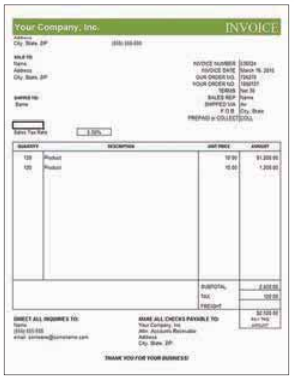
11. Engagement of Forwarding Agent
After Export Inspection certificate is
obtained, the exporter has to obtain clearance from customs authorities.
Generally exporters engage Clearing Forwarding Agent to fulfill various custom
formalities. The latter do it for fees.
12. Dispatch of Goods to Port and Sending the Receipt to Agent
The exporter will send the goods over to
port town by rail or by truck and endorse the Railway Receipt (R/R) or Lorry
Receipt(L/R) to forwarding agent’s favour with necessary instructions.
13. Fulfilment of Customs Formalities by Forwarding Agent
i.
Taking the Delivery of Goods at Port Town
When the goods arrive at port town, the
forwarding agent takes delivery from the rail or from the truck after the
submission of railway receipt (R R) or lorry receipt (L R). Then the agent
arranges for storage of the consignment in a warehouse.
ii.
Obtaining Shipping Order
The clearing and forwarding agent
approaches the shipping company or its agentto book space in the ship.
Onbooking a space in ship, shipping company issues a document called Shipping
Order. It contains instruction to the captain of the ship concerned to accept
the consignment on board. Besides it provides information about the name of
ship, nature of goods shipped, the date of shipping, weight of goods, port of
destination, and freight paid.
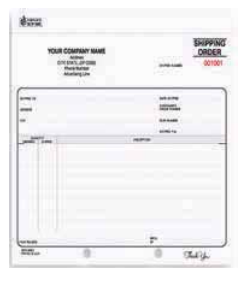
iii.
Charter Party
A charter party is a formal agreement
between ship owner and the exporter under which exporter hires an entire ship
or a major part of ship either for a particular voyage or for a specific time
period when the shipping is heavy. The hiring of ship for specific voyage is
called voyage charter while this hiring of entire ship for a specific time
period is called time charter. The content of charter party includes the
following
1. Name of the ship 2. Place of loading
3. Port of destination 4. Name of
exporter
5. Amount of freight
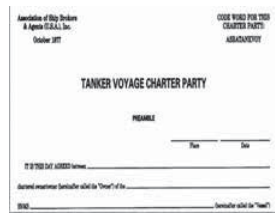
14. Customs Clearance
The exporter or his agent prepares three
copies of shipping bill in printed
form. The shipping bill contains
the details like name and address of exporter, description of goods, value of
goods, volume of goods, identification marks on the goods, port of destination
and port of loading.
There are three types of shipping bills
for three different categories of goods namely, dutiable goods,
duty-free goods and duty draw-back goods Forwarding agent
proceeds to pay of export duty calculated by customs officers in the case of
dutiable goods.
i.
Payment of Dock Dues
After
the payment of
export duty, the forwarding
agent arranges for transporting the goods to docks. The agent fills two copies
of challan and submits it to the dock authorities along with one copy of
shipping bill. Then the agent pays dock charges. Dock authorities
retain one copy of challan and return the second copy to the forwarding agent.
This signed copy is called Dock Receipt or Port Trust Receipt.
ii.
Obtaining Permission for Shipment
Theforwardingagentbringstheconsignment
over to the dock. The Customs Preventive Officer stationed at the docks
inspects the goods on the basis of declaration in the shipping bill. This
officer gives permission to load the goods onto board by issuing Customs Export
Pass or simply makes an endorsement with wordings ‘Let Ship’ on the duplicate
copy of shipping bill.
iii.
Mate’s Receipt
Mate’s Receipt is the document issued by
the captain of the ship acknowledging the receipt of goods on board by him to
the port of specified destination. This contains details like quantity of goods
shipped, number of packages condition for packing. etc., Where the Mate is
satisfied with packing he/she issues clean receipt. If he/she is not satisfied
with packing, he/she issues foul receipt. Forwarding agent should seek to get
clean receipt. Otherwise insurance company will not bear liability for loss in
case of foul receipt.
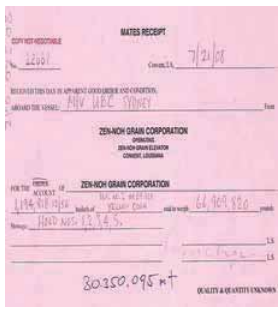
iv.
Bill of Lading
Bill of Lading, refers to a document signed by ship owner or to his agent mentioning that goods specified have been received and it would be delivered to the importer or his agent at the port of destination if good condition subject to terms and conditions mentioned therein.
15. Preparation of Commercial Invoice and Submitting Documents to Bank
The exporter prepares a commercial
invoice in respect of the goods shipped
in triplicate according to the terms and conditions agreed between the
exporter and the importer. Then the exporter submits all related documents like
commercial invoice, insurance policy, certificate of origin, consular invoice,
etc., to his bank for onward transmission to importer’s bank with the instruction
that there documents should be delivered to importer only when he accepts the
bills enclosed.
16. Securing Payment
i.
Bills of Exchange
Bills of exchange of can be two types
a. Document against payment (D/P)
b. Document against acceptance(D/A)
Document
against Payment (D/P)
In this case documents are handed over
to the importer only against payment of bill by importers bank
Document
Against Acceptance (D/A)
In this case documents are released to
the importer immediately after he
accepts the bills of exchange
sent along with the
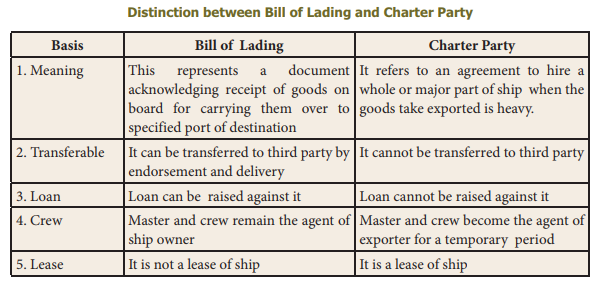
The exporter’s bank makes payment through
importer’s bank either immediately or at maturity date in the case of usance bill.
This amount is, then credited to the exporter’s account.
ii. Bank Certificate of Payment
After receiving payment for exports, the exporter has to get a certificate from his bank mentioning that the
documents relating to export have been presented to the importer for payment
and the payment has been received from the importer as per exchange control
regulation.
Intermediaries in Export Trade
Intermediaries involved in export trade
include the following
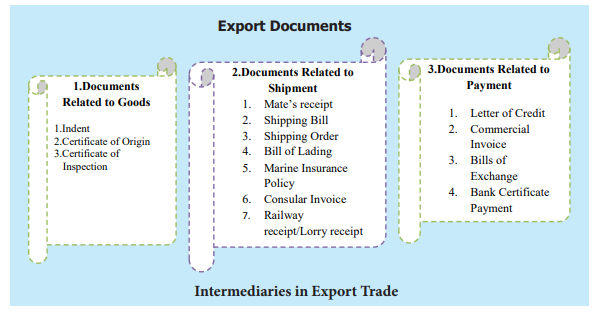
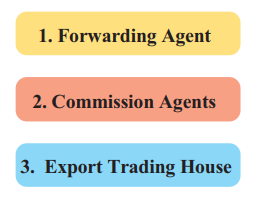
1. Forwarding Agent
Forwarding agent is appointed by
exporter to fulfill the customs and shipping related formalities and certain
logistic functions.
1.
Enlightening exporters on the relevant
trade laws
2.
Supplying transport, handling cost
information to exporter.
3.
Assisting exporter in packing, marking
and labeling.
4.
Arranging transport for exporter
5.
Assisting in fulfilling customs
formalities
6.
Preparing and procuring documents
7.
Exposing exporter on the developments
happening in transportation.
2. Commission Agents
Commission Agent is an international
agent who is paid a certain percentage of commission for the order booked by
him abroad. He offers product to potential customers in the territory allotted
to him in accordance with the terms and
condition specified by the principal. However there is no employment
relationship between the agent and the principal and the relationship is purely
temporary. The agents gets only commission at the end of the deal.
3. Export Trading House
Export Trading House has been
established to increase the export, strengthen the global market, capacity and
get necessary facilities for increasing export performance of our country. It
consists of merchants, exporters, trading companies, export oriented units, units
located in export processing zones, electronic hardware technology park etc.
Functions/Services of Export house
The functions of export house are
mentioned below
1.
Identifying potential market for a
product
2.
Finding buyers and their agent and
eliciting their response for export proposal.
3.
Establishing product specification in the light of market needs, standards and
regulation in accordance with suppliers capabilities.
4.
Determining appropriate mode of
transportation and routing keeping in mind the cost, quality of service and
security
5.
Preparing the goods for delivery at
destination
6.
Determining buyer’s creditworthiness
7.
Negotiating the transactions
8.
Arranging proper insurance coverage
against maritime risks and currency fluctuations
9.
Financing the transactions and paying
for goods and service received.
10.
Preparing document for international
trade
11.
Settling claim.
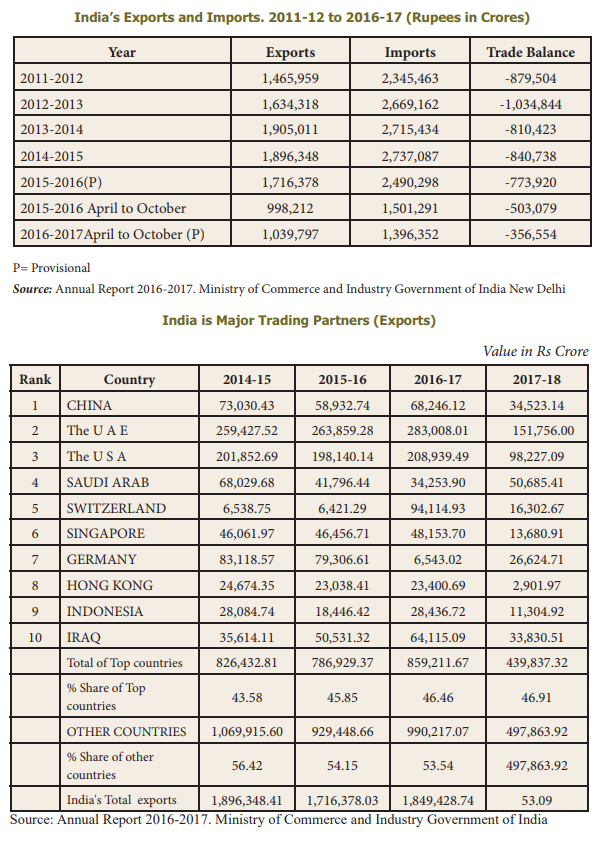
Related Topics